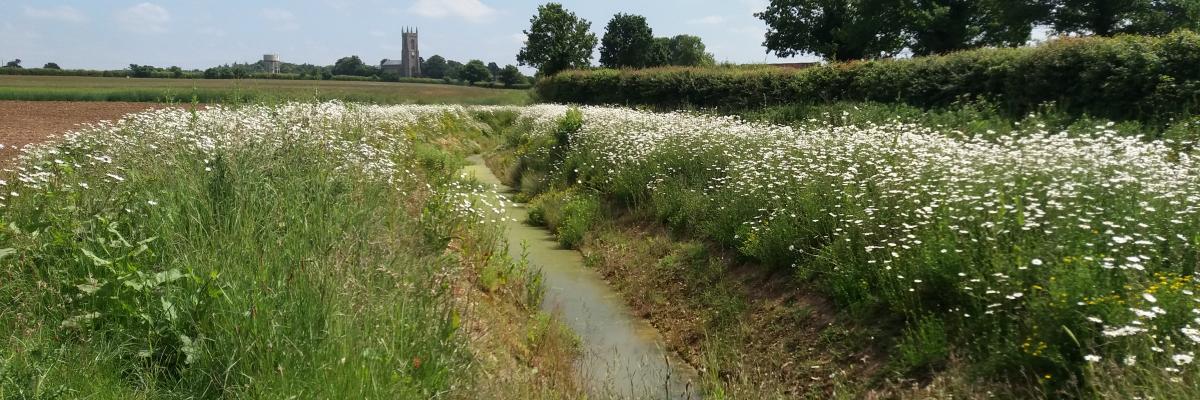

Improving water quality on the River Wensum
An environmental and socio-economic case study
Download the PDF
In Autumn 2016, three linked sediment traps were installed on a farm near the Blackwater, a tributary that eventually feeds into the River Wensum (Special Area of Conservation). The purpose of this was to capture soil and water run-off from agricultural land. The traps are maintained by removing the accumulated sediments and attached nutrients, and returning this to the land. As well as improving water quality, the traps will provide an array of socio-economic benefits including flood alleviation and farm business efficiency. Produced by Norfolk Rivers Trust, this document contains a case study outlining the work that was undertaken, as part of the Water Sensitive Farming Initiative (WSF)*, to improve water quality. The work involved the creation of three silt traps on a farm in the Broadland Rivers Catchment. The case study summarises what the issues were, how they were addressed, and how effective they have proved to be.
Students at the University of East Anglia carried out monitoring at the Salle Estate in 2017 to measure the effectiveness of the silt traps as part of the River Wensum Demonstration Test Catchments (DTC) project: a Defra, Environment Agency and Welsh Government Assembly initiative.
So far, the following findings indicate that the silt traps have been effective at reducing river sediment inputs from surface sources:
Sediment fingerprinting provides evidence that silt traps are intercepting surface run-off:
- Data from in- river suspended sediment samples found that subsurface sediment proportions (e.g. from channel banks) were significantly higher post-silt trap installation, indicating that surface sediment sources have decreased post-silt trap.
- Suspended sediment stemming from road verges was also lower post-silt trap. This means that the traps were also successfully capturing run-off from the adjacent metalled road.
In-river water samples and turbidity probes:
- Regular samples and data showed that in-stream sediment loads and turbidity values were significantly lower post-silt trap installation.
There are various environmental, social and economic benefits for a project such as this, including:
- Reduced input costs; capturing valuable topsoil and nutrients before they leave the farm will provide financial savings for farmers.
- Preventing eutrophication.
- Preventing gravel-bed smothering.
- Reducing the cost of water treatment.
- Slow the flow - reducing the volume of water entering the watercourse during peak flood flow.
- Reducing in-channel siltation can reduce the risk of flooding as there will be an increased water storage capacity.
Farmers can contact Norfolk Rivers Trust if they would like to discuss implementing something similar on their site to reduce run-off. WSF can provide advice, support and grant funding.
*WSF is an initiative that provides independent farm support and advice. The aim is to deliver practical on-farm measures that improve the quality and resilience of the surrounding water environment. Operating at a catchment scale (mainly in the Broadland Rivers and Cam and Ely Ouse catchments), Norfolk Rivers Trust farm advisors develop bespoke and flexible soil and water solutions that are tailored to individual needs.

Header image shows silt trap. Photo credit: Norfolk Rivers Trust. CC BY
Video below shows design and construction of silt traps with a timelapse
